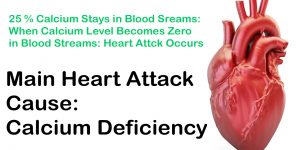July 31, 2017 at 9:37 pm
This write up is based on the research conducted in our department of Pharmacology and Toxicology, University of Maiduguri.
Taxonomy and Classification of the Herbal Drug Sterculia setigera.
Kingdom: Plantae
Subfamily: Viridiplantae
Infra kingdom: Streptophyta
Supra division: Embryophyta
Division: Tracheophyta
Class: Magnoliopsida
Super order: Rosanae
Order: Malvales
Family: Malvaceae
Genus: Sterculia L.
Specie: Sterculia setigera Delile
Synonyms: Sterculia cinerea A. Rich., Sterculia tomentosa Guill. Pet perrott.
Phytochemicals analysis of the extract of Sterculia setigera Del. Contained the following; phenolic, alkaloid, flavone, glycosides, saponnins, phenols, and tannins. Similarly, the plant revealed the presence of reducing and non-reducing sugars.
Median Lethal Dose (LD50)
The results of the median lethal dose (LD50) show no death in phase I after 24 hours of intraperitoneal administration of the ethanol extract of Sterculia setigera Del. but however in phase II studies, death was observed with dose of 5000mg/kg.
This shows that the ethanol stem-bark extract of Sterculia setigera Del. was relatively less toxic in albino mice with lethal dose that can kill 50% of the animals (LD50) being 3872.98mg/kg for the intraperitoneal route.
The analgesic activity of the ethanol stem-bark extract of Sterculia setigera Del. extract was found to be dose-dependent. The activity of the extract (250mg/kg and 500mg/kg) was less than that of the positive control (Diclofenac 100mg/kg). When the dose was 1000mg/kg, the extract had a higher reaction time than Diclofenac (100mg/kg). The effect of the extract at 250mg/kg produced a percentage increase in pain threshold of about 83.7% with the peak of antinociceptive effect at 60 minute while with the highest dose of 1000mg/kg, the percentage increase in pain
threshold was 361.9% compared with 220% for Diclofenac. This was found to be statistically significant when compared with control reaction time at 0 minute for the group.
The results obtained from the acute toxicity study (LD50) determined the lethal dose that killed 50% of the mice, value to be 3872.98mg/kg after intraperitoneal administration of the ethanol extract of Sterculia setigera Del.
The animals that received the ethanol extract of Sterculia setigera Del. especially at about 5000mg/kg exhibited twitching, drowsiness, less responsiveness, dyspnea and calmness before death. The high LD50 indicates that the plant has less toxicity profile with high safety margin for use.
Carly, (2017 ) reported in an unpublished work (Faculty of Pharmacy Project, University of Maiduguri) that the oral administration of the ethanol extract of Sterculia setigera Del was free from toxicity signs and no death was observed in both phase I and phase II study. Any substance that reduces or prevents pain either acts on peripheral or central nervous system to selectively relieve pain without significantly altering consciousness. Centrally-acting analgesics act by raising the threshold for pain and also altering the physiological response to pain. On the other hand, peripherally
acting analgesics act by inhibiting the generation of impulses at chemoreceptor site of pain. The model employed for screening of analgesic activity in this study is the hot plate method using thermal stimuli. The method is useful in illustrating centrally mediated antinociceptive responses which focuses generally on changes above the spinal cord level . In hot plate model, the ethanol extract of Sterculia setigera Del. exhibited a significant dose-dependent analgesic activity by increasing the pain reaction time of the mice compared to control (tween solution) at all times Fig 4.1. In comparison with the control (Tween solution), Diclofenac produced the highest reaction time (20 sec) at 60 min, followed by the extract 1000mg/kg with 18 sec at 60 min, however, the percentage increase in reaction time was highest (361%) with 1000mg/kg of the extract because the basal group control at 0 min was 4.2 sec compared with 6.25 sec for Diclofenac (100mg/kg). Analgesic drugs which are centrally acting elevate pain threshold of animals towards heat and pressure. Therefore, the analgesic effect of the extract of Sterculia setigera Del. on this pain-state model indicates that it might be centrally acting. The treatment with the extract (1000mg/kg) produced comparable good reaction times with Diclofenac, suggesting that the Sterculia setigera could be a better natural alternative for pain relief.
As far as published literature is concerned, this is the first report on the analgesic activity of Sterculia setigera Del.









